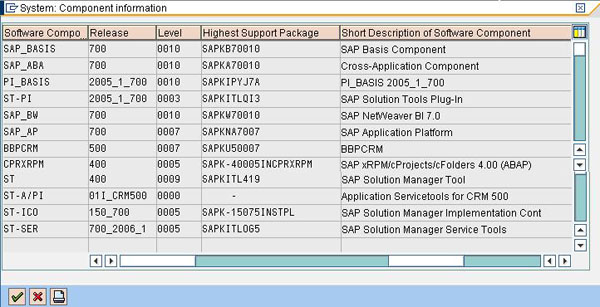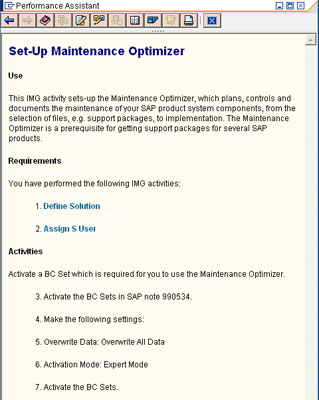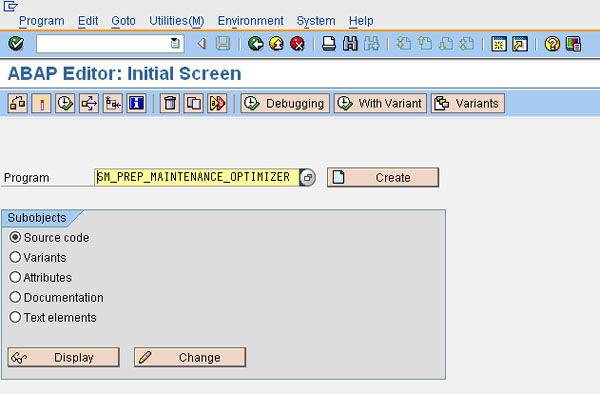Motivation
Hi everybody! First I need to say for all SAP Xperts a Happy New Year! In this year I hope all the good wishes can be realized for all from SAP Community.
In this year in Brazil very important companies will upgrade your system from SAP R/3 4.6C to SAP ECC 6.0. Thinking about this, I decided share some Important Issues to conduze a sucess Upgrade Project.
The first Major Issue I think about in the Maitenance Optimizer. Since April, 2nd 2007 all support packages and some specify pathes must be downloaded only with the SAP Solution Manager - Maintenance Optimizer. If you try download any Support Package in the SAP Support Portal (http://www.service.sap.com).
Why???
The famous question is... Why I need install this?
Well.. I long time ago ... when the SAP release an version of R/3 the SAP Architeture Technology was simple comparing today. Look the picture below... This the SAP Architeture Technology used in all active releases on SAP ERP Solution.

In the SAP ERP 2005 (ECC 6.0) contains more that 50 different software components. To efficiently manage the resulting combinations, professional support is necessary. If you selected any package in the SAP Support Portal, you undestand how is hard find a correct package.
The Maitenance Optimizer is a Module from SAP Solution Manager for improve a Change Management of these changes.
Step-by-Step - Hands ON!!!!
First you need a installed SAP Solution Manager 3.2 or 4.0. This weblog shows the procedure on the version 4!
Minimum Support Package: |
SAP Release
| ST Stack
|
SAP Solution Manager 3.2 | SP15 |
| SAP Solution Manager 4.0 | SP09 |
P.S.: On the Version 4, the ST stack 09 package is depedent on BBPCRM stack 07 which is depedent on Basis and ABAP Stack 10! |
| P.S.2: ST-ICO package which is raised to in Basis and ABAP Stack 10, is not required to implement ST stack 09, but should |
Prior to configuring the Maintenance Optimizer your minimum system requirements are:

After this, importants SAP Notse must be implemented:
OSS Note 990534: This note creates an ABAP Program called SM_PREP_MAINTENANCE_OPTIMIZER
OSS Note 1008717: This note avoid selection issues mentioned in OSS 1022797: “Maintenance Optimizer: Can not select product version“
If you are using Solution Manager Support Package 9 (ST 400 SP09) the configuration procedure can be found as follows:
• Transaction SPRO -> SAP Reference IMG -> SAP Solution Manager Implementation Guide -> SAP Solution Manager -> Basic Settings -> Set Up Maintenance Optimizer
• Call program SM_PREP_MAINTENANCE_OPTIMIZER in SE38, that was provided in OSS note 990534As of Solution Manager Support Packages level 10 (ST 400 SP10 and above), the procedure can be found in the following location:
• Transaction SPRO -> SAP Reference IMG -> SAP Solution Manager Implementation Guide -> SAP Solution Manager -> Advanced Configuration -> Basic Settings -> SAP Solution Manager System -> Change Management -> Set Up Maintenance Optimizer


Define all the landscape. You can use the DSWP, SMSY, SMSY_SETUP Transactions.
In the Landscape you must indicate servers, databases, systems (products) and an logical component.

Well, after define the system and the logical compoenent, define the Landscape.


Now, is time to define the MarketPlace users. To get the packages in the download basket, we need inform to the system the S-user in the Solution Manager. For each SAP-User you can assign a MarketPlace S-user.
Call this transation AISUSER or follow the IMG Path:

In the first field you can put the SAP User and the next the S-USER

And... the last step...
Call the ABAP Program SM_PREP_MAITENANCE_OPTIMIZER:

well.. that's it...
you configure the Maintenance Optimizer!
Process Flow (How-To-Use)
- The Maintenance Optimizer shows relevant maintenance files for the customer's solution.
- The customer selects the required packages and approves the download of the maintenance files.
- The customer downloads the software.
- The customer imports the software (furthermore uses familiar tools such as SPAM, SAINT,...).
- The customer closes the maintenance procedure.
